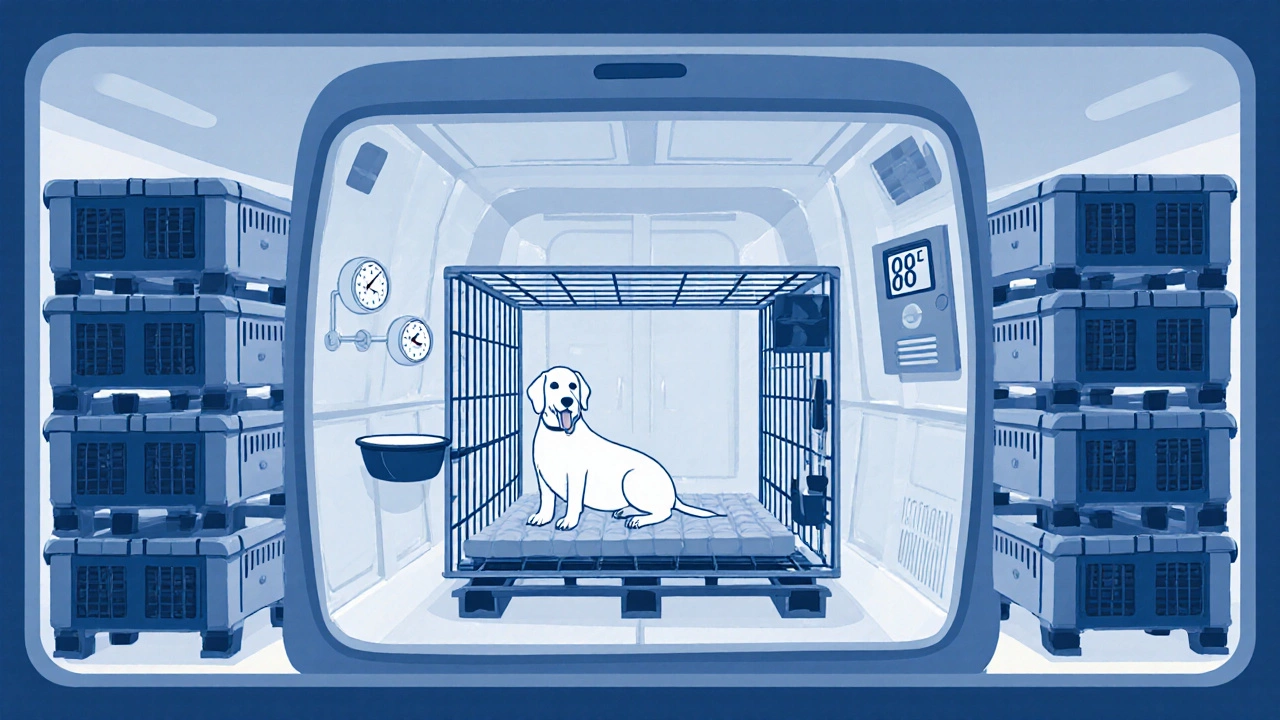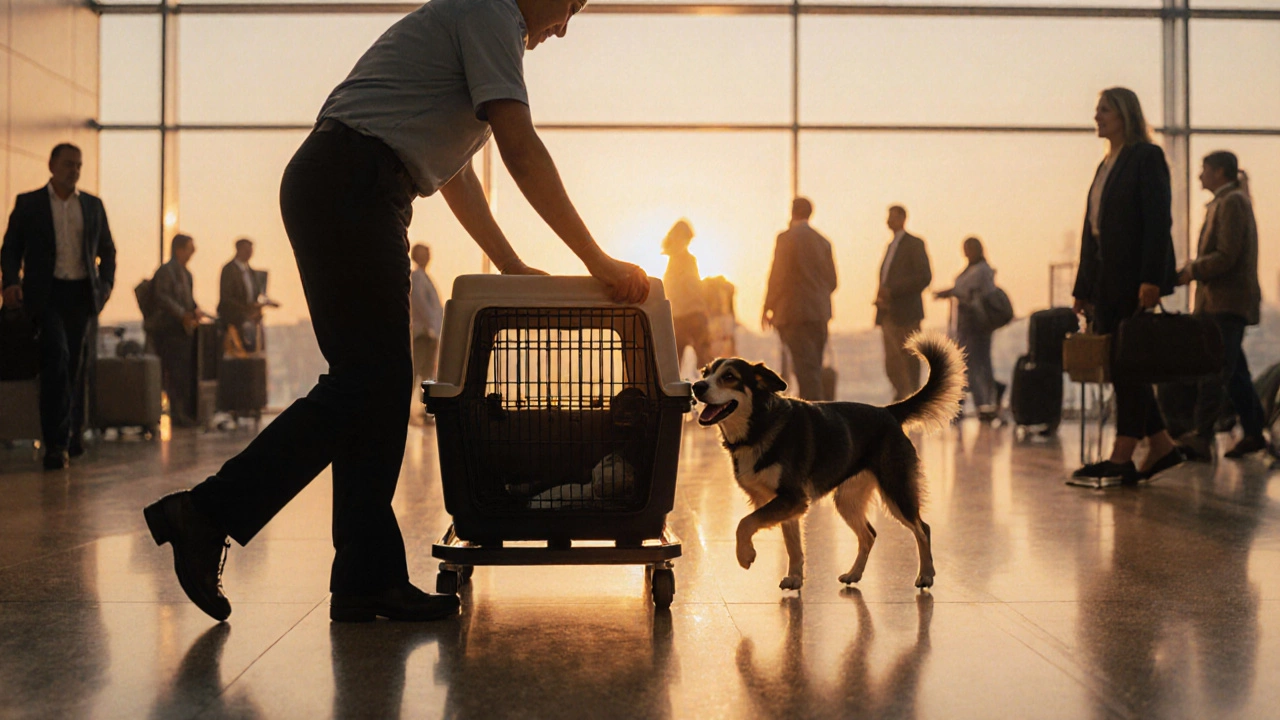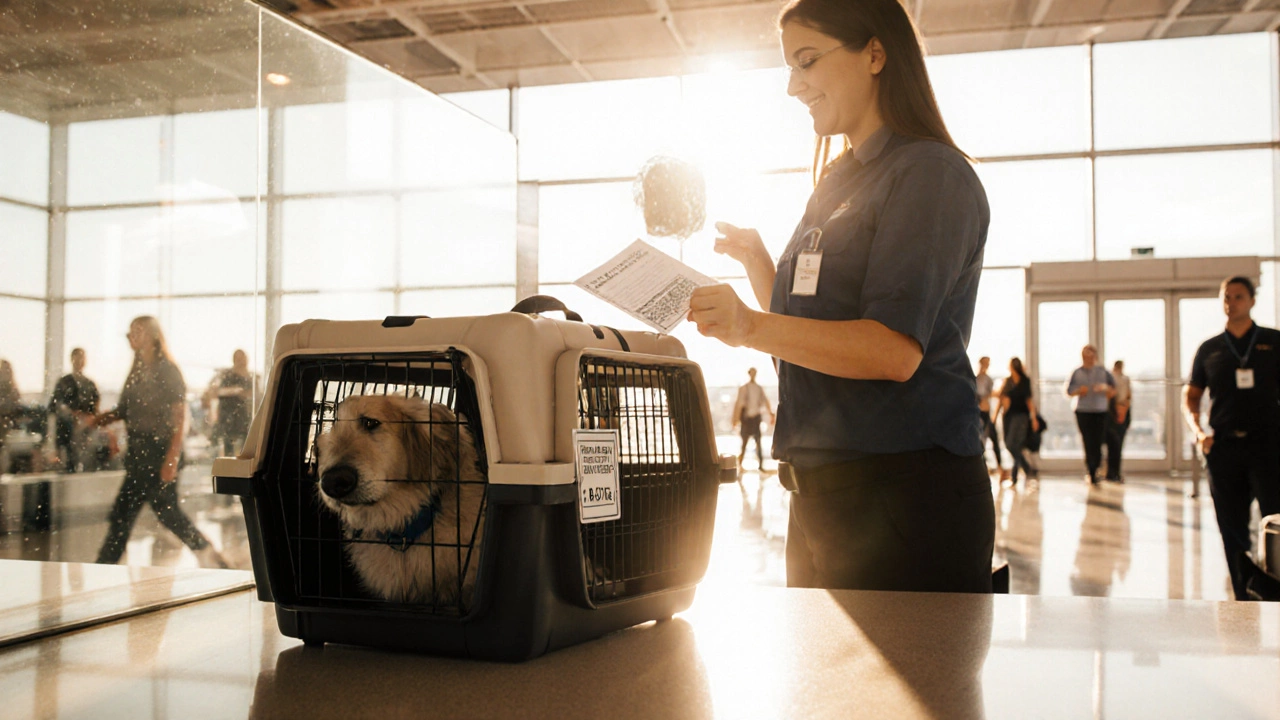Dog Cargo Safety Calculator
Dog Safety Assessment
Enter your dog's details and flight information to determine if cargo travel is safe for your pet.
Safety Assessment Results
Key Findings
When you book a flight and your furry companion has to stay in the cargo hold, a rush of questions hits you: dog cargo flight safety, temperature control, health risks, and whether the airline will treat your dog like a passenger or a piece of luggage. Below we break down the real risks, the rules you must follow, and practical steps to keep your dog as safe as possible when the plane isn’t on the passenger deck.
Quick Takeaways
- Only fly in cargo if your dog meets the airline’s size, breed, and health requirements.
- Choose airlines with temperature‑controlled holds and a strong pet‑safety record.
- Get a recent veterinary health certificate and make the carrier airline‑approved.
- Travel during mild weather and avoid extreme heat or cold.
- Arrive early, request a pre‑flight check of the cargo area, and stay in touch with the crew.
Understanding the Cargo Hold
Cargo hold is the portion of an aircraft where luggage, freight, and pets travel, separated from the passenger cabin. It isn’t a storage closet; it’s a pressurized, climate‑controlled environment on most modern jets. However, the level of temperature regulation varies by aircraft type and airline. Older planes may only have basic heating, while newer fleets often feature fully temperature-controlled compartments that keep the interior between 45°F and 85°F throughout the flight.
Regulatory Landscape: Who Sets the Rules?
The Federal Aviation Administration (FAA) establishes baseline requirements for animal transport in the U.S., but individual airlines add layers of policy. Internationally, the International Air Transport Association (IATA) publishes the Live Animal Regulations, which most carriers adopt as a standard. These rules cover:
- Maximum temperature ranges for the cargo hold.
- Breed and size restrictions (e.g., brachycephalic breeds like Pugs often face bans).
- Documentation such as a recent veterinary health certificate.
- Carrier specifications - the crate must be airline‑approved, well‑ventilated, and large enough for the dog to stand, turn around, and lie down.
Airline Policies at a Glance
Not all airlines treat cargo‑fed dogs the same way. Below is a snapshot of three major U.S. carriers that frequently handle pet cargo. Fees, temperature limits, and breed bans differ, so always double‑check before you book.
| Airline | Temperature Range (°F) | Max Weight (lb) | Breed Restrictions | Fee (One‑Way) |
|---|---|---|---|---|
| Delta Air Lines | 45‑85 (heated), 32‑95 (unheated) | 75 | Pugs, Bulldogs, Boston Terriers (banned) | $125‑$200 |
| United Airlines | 45‑85 (heated), 32‑95 (unheated) | 70 | Shih Tzus, Pugs (banned) | $110‑$185 |
| American Airlines | 45‑85 (heated), 35‑95 (unheated) | 70 | Pugs, Boxers, French Bulldogs (banned) | $120‑$210 |

Key Health Risks in the Cargo Hold
Even with a temperature‑controlled compartment, a few hazards persist:
- Heat stress: Dogs can overheat quickly if the hold exceeds 85°F. Signs include rapid panting, drooling, and disorientation.
- Cold stress: Below 45°F, especially for short‑haired breeds, can lead to hypothermia.
- Dehydration: The hold’s air is drier than the cabin. Older dogs or those with medical conditions dehydrate faster.
- Noise & vibration: Cargo areas experience more engine noise and turbulence, which can be frightening.
- Delayed access to water: Most airlines do not supply water during flight; you must ensure your dog is well‑hydrated before boarding.
Mitigation steps include a pre‑flight health check, using a carrier with built‑in water bowls (sealed to prevent spills), and avoiding extreme weather dates.
Preparing Your Dog for Cargo Travel
- Visit the vet 7‑10 days before departure. Obtain a health certificate that states your dog is fit for air travel and up‑to‑date on vaccinations.
- Choose an airline‑approved carrier. It should be rigid, ventilated on all sides, and labeled with your contact info and the words “Live Animal - Do Not Open.”
- Acclimate your dog to the carrier. Let them spend short periods inside the crate at home, rewarding calm behavior.
- Limit food intake. Offer a light meal 4‑6 hours before departure to reduce the chance of nausea.
- Hydrate but not over‑water. Provide fresh water up to the flight and attach a spill‑proof bowl if the airline allows.
- Attach a calming aid (if needed). Discuss with your vet about pheromone sprays or a low‑dose prescription for anxious dogs.
- Check weather. Use the airline’s cargo temperature guidelines; avoid flights when projected temps exceed safe limits.
- Arrive early. Request a visual inspection of the cargo hold and ask staff to confirm the crate’s placement and ventilation.
What to Expect on the Day of Travel
After check‑in, the crate is taken to a secure loading area. Some airlines allow you to watch the loading process; others won’t. Keep a phone handy-many carriers will text you when the crate is loaded and again when it arrives at the destination.
During the flight, the crew monitors temperature readings for the cargo bay. If the cabin experiences abnormal temperature spikes, crew members may adjust cargo placement or request a re‑routing.
Upon landing, the crew unloads pets before passengers, so you’ll usually retrieve your dog within minutes. Inspect the crate for any signs of injury, and give your dog a water break and a calm walk.

When Cargo Travel Isn’t Worth the Risk
Even with precautions, certain scenarios make cargo travel too risky:
- Senior dogs or those with heart, respiratory, or joint conditions.
- Very young puppies under 8 weeks (many airlines require a minimum of 12 weeks).
- Breeds with short snouts that are banned or have higher heat‑stroke susceptibility.
- Flights longer than 8‑10 hours on aircraft without a heated hold.
In those cases, consider alternative options: driving, using a pet‑friendly airline that offers in‑cabin travel, or hiring a specialized pet transport service that uses climate‑controlled vehicles.
Frequently Asked Questions
Can I bring my dog in the cabin instead of cargo?
Most airlines allow small dogs (usually under 15‑20 lb) to travel in‑cabin with an approved carrier that fits under the seat. If your dog exceeds the size limit, cargo is the only option.
What temperature is considered safe for a dog in cargo?
The FAA and IATA recommend a cargo hold temperature between 45°F (7°C) and 85°F (29°C). Many airlines require a heated hold for flights when ambient temps drop below 45°F or rise above 85°F.
Do I need a health certificate for every flight?
Yes. Most carriers require a certificate issued within 10 days of travel that confirms your dog is fit for air transport and lists current vaccinations.
Can I put water in the crate during the flight?
Only if the airline explicitly permits a sealed, spill‑proof water bowl. Otherwise, give your dog plenty of water before drop‑off and after pickup.
What should I do if my dog shows signs of distress after landing?
Check for overheating, dehydration, or injuries. Offer water, a quiet space, and if symptoms persist, call your veterinarian immediately.
Bottom Line
Flying with your dog in cargo can be safe-but only when you follow airline policies, prepare your pet correctly, and choose flights that stay within safe temperature windows. Treat the cargo hold like a moving clinic: keep records, monitor conditions, and prioritize your dog’s health above convenience. When in doubt, explore alternative travel methods or consult a pet‑travel specialist.
